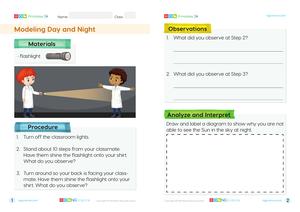Begin the lesson by discussing the concept of gravity and its effect on objects near Earth. Introduce the idea of the moon orbiting Earth due to gravity.
Go to the LessonLearning Objectives
- Understand the concept of gravity and how it affects objects near Earth.
- Identify the role of the moon as an object that orbits Earth due to gravity.
- Describe the purpose and function of artificial satellites such as the International Space Station and the Hubble Space Telescope.
- Recognize the significance of the James Webb Space Telescope and its contributions to space exploration.
Introduction and Hook
Engage students with a brief overview of artificial satellites, including the International Space Station and the Hubble Space Telescope, highlighting their significance in space exploration.
Direct Instruction
Explain the role of gravity in keeping objects like the moon in orbit around Earth. Discuss the purpose of artificial satellites and their functions.
Introduce the James Webb Space Telescope and its contributions to our understanding of the universe.
Guided Exploration
Watch the video 'Movements of the Earth – Quiz Edition' to understand Earth's structure and movements. This video includes a quiz to reinforce learning.
Hands-On Activity
Conduct a hands-on activity where students model the concept of day and night using a flashlight to simulate the Sun's light.
Independent Practice
Assign students to observe the moon's position in the sky and draw its movement every 30 minutes over two hours. This helps assess their understanding of the moon's movement.
Check for Understanding
Discuss with students the significance of artificial satellites, such as the International Space Station and the Hubble Space Telescope, in space exploration.
Review the role of gravity in keeping the moon and artificial satellites in orbit around Earth.
Review and Reflection
Reflect on the contributions of the James Webb Space Telescope to our understanding of the universe.
Encourage students to share their observations and thoughts on how gravity affects objects near Earth.
Assessment and Extension
Use the 'Review – Earth and Space Patterns' assessment to evaluate students' understanding of celestial movements and the effects of the Sun on Earth.
Try the Quiz





